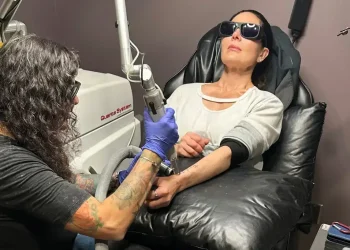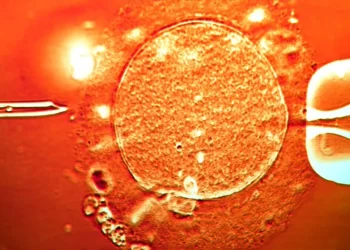U.S. Organ Donation System Under Review After Shocking Near-Miss Cases in Kentucky
The U.S. government is making changes to how organ donations are handled after a troubling investigation. A donation group in Kentucky reportedly continued organ recovery plans for patients who still showed signs of life. The cases raised serious questions about safety and trust in the nation’s transplant system.
Now, Congress is looking into how to prevent similar mistakes and restore public confidence in organ donation — a system that saves thousands of lives each year.
What Sparked the Investigation
The controversy began in 2021 when a Kentucky-based organ donation group reportedly pressured a hospital to proceed with withdrawing life support from a man who had overdosed — even though he was showing signs of waking up.
Thankfully, a doctor noticed the man moving and moaning before the organ retrieval surgery started. The procedure was stopped, and the man survived.
The case was part of a larger federal investigation launched last fall. That investigation uncovered a “concerning pattern of risk” in how the Kentucky organization handled dozens of potential donors. In most cases, plans to recover organs began too early — especially at small or rural hospitals with less experience in organ donation procedures.
Why It Matters
Organ donations are critical. More than 100,000 people in the U.S. are waiting for a transplant, and an average of 13 die each day without one. But only a small number of deaths qualify for donation — about 1% — making every potential donor extremely important.
That’s why trust in the system matters. After hearing about these near-miss cases, some people have removed themselves from organ donor registries, according to lawmakers.
“We have to get this right,” said Rep. Brett Guthrie, a Kentucky Republican who chairs the House Energy and Commerce Committee. His own mother died while waiting for a liver transplant. Guthrie said he’s staying on the donor registry and wants people to feel confident in the process.
How the Organ Transplant System Works
The U.S. transplant process is complex and involves multiple parties:
- Hospitals care for patients who may become donors.
- Organ procurement organizations (OPOs) — 55 in total — handle the recovery of organs and help match them to recipients.
- Transplant centers decide if organs are a good match for patients in need.
- Two government agencies — HRSA and CMS — oversee different parts of the system.
When someone is declared brain-dead or doctors and family decide to withdraw life support, the hospital must notify its local OPO. From that point, donation planning begins — but the OPO cannot influence the decision to stop life support.
Types of Organ Donation
There are two main ways people become donors:
- Brain Death Donation:
This is the most common. It happens after a person has no brain activity but their body is kept alive by machines. Organs are retrieved while blood is still flowing. - Circulatory Death Donation (DCD):
This is becoming more common. It happens when a person’s heart stops after life support is withdrawn. Doctors wait at least five minutes to confirm the heart doesn’t restart before declaring death.
Organs must be recovered quickly after death, usually within two hours, or they can’t be used.
What Went Wrong in Kentucky
The Kentucky OPO reportedly began prepping for donation before it was clear the patients were actually dead or beyond recovery. While no organs were removed inappropriately, federal investigators said planning began too early in some cases, especially in hospitals without much experience in donation protocols.
One of the key concerns is how donation organizations work with hospital staff and when they should pause or stop the process if the patient’s condition changes.
The Health Resources and Services Administration (HRSA) now wants clearer guidelines to prevent these risks. One proposal: allow anyone — family, hospital staff, or OPO personnel — to halt the donation process at any point if something seems off.
Changes Already Underway
The Kentucky donation group at the center of the investigation, known as Kentucky’s Network for Hope, says it has already made improvements:
- All hospital staff now receive a checklist on how to care for possible donors and how to pause the process when concerns arise.
- A new system lets anyone — anonymously — report complaints or concerns.
Barry Massa, who leads the Kentucky group, told Congress that donation teams are not involved in life-or-death decisions. “We are not even in the room at that time,” he said.
Even after the patient is declared dead, OPOs don’t provide hands-on care. Their role is to gather information, talk with the family, and coordinate with transplant centers — all while hospital staff continue to care for the patient until organs are retrieved.
What’s Next
Congress and federal health agencies say they want better collaboration and oversight moving forward. HRSA has already told the national transplant network to improve how OPOs communicate with hospitals — especially when the patient’s condition changes or if any uncertainty arises.
Dr. Raymond Lynch, who works with HRSA, told lawmakers that donation after circulatory death is technically demanding and requires a close partnership between hospitals and OPOs.
“This isn’t about pointing fingers,” he said. “It’s about making sure families and patients are treated with respect — and that donated organs are handled responsibly.”
Conclusion
The recent investigation raised tough questions about how we manage organ donation in the U.S. While most donations are done safely and ethically, these cases show that even rare mistakes can erode public trust.
Officials are promising reforms to make the system safer, more transparent, and easier to understand — because every donor matters, and every transplant can mean a second chance at life.
This article was rewritten by JournosNews.com based on verified reporting from trusted sources. The content has been independently reviewed, fact-checked, and edited for accuracy, neutrality, tone, and global readability in accordance with Google News and AdSense standards.
All opinions, quotes, or statements from contributors, experts, or sourced organizations do not necessarily reflect the views of JournosNews.com. JournosNews.com maintains full editorial independence from any external funders, sponsors, or organizations.
Stay informed with JournosNews.com — your trusted source for verified global reporting and in-depth analysis. Follow us on Google News, BlueSky, and X for real-time updates.














